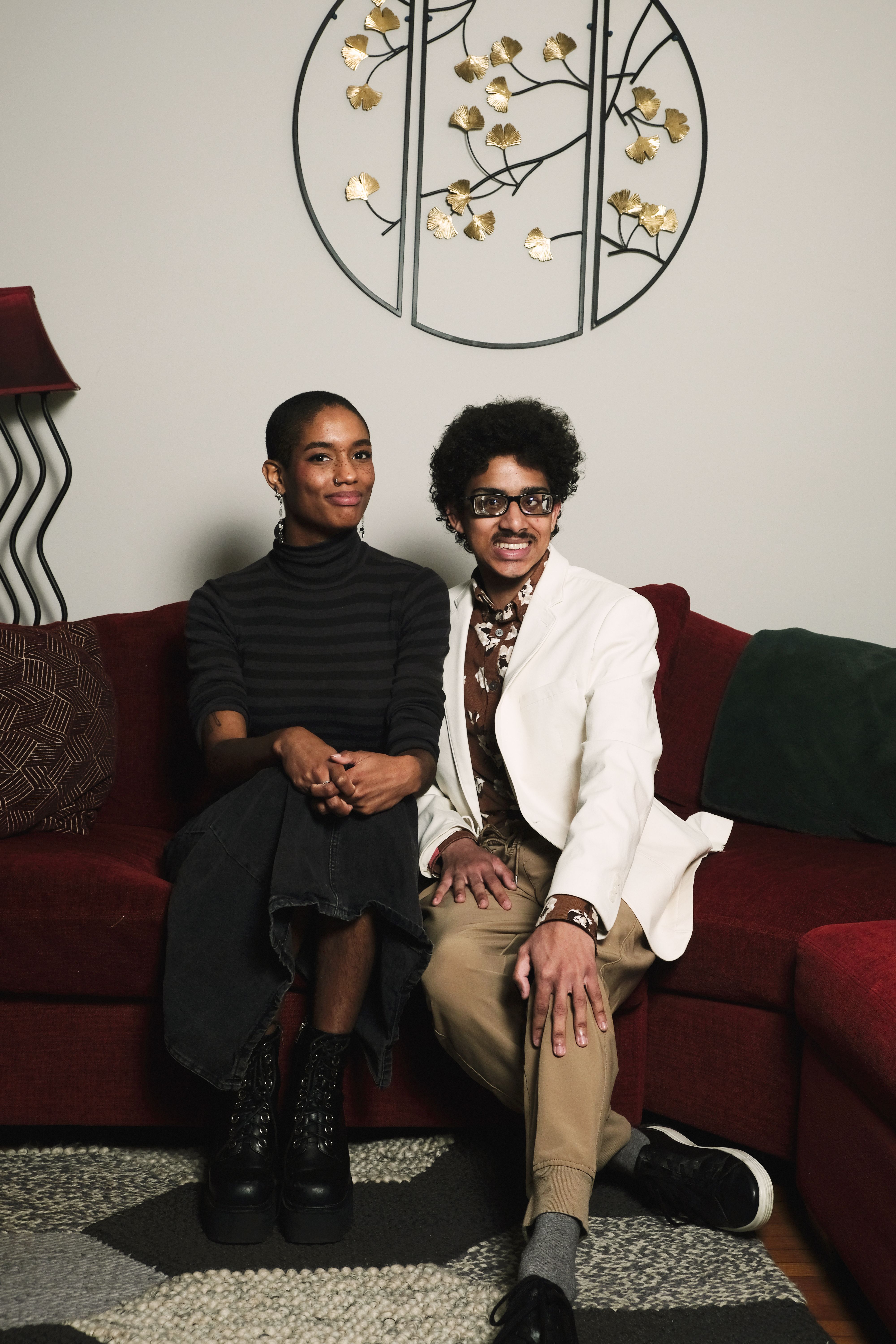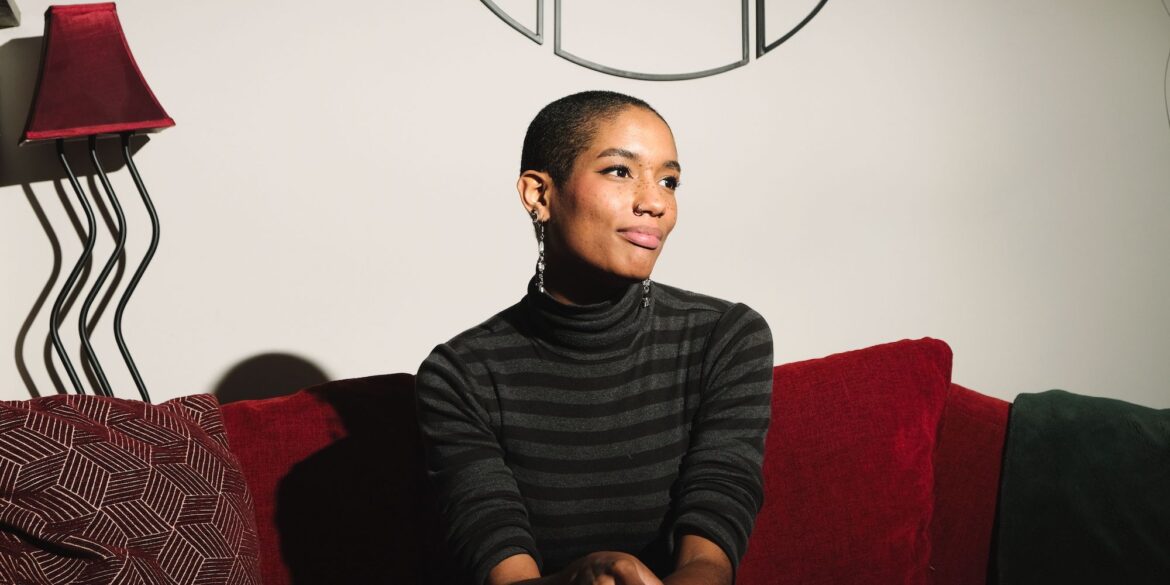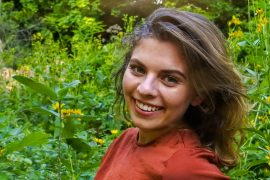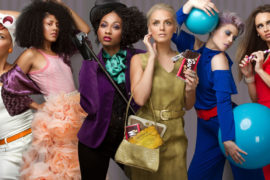Twenty-five-year-old Morgan Robinson-Gay, has been at the forefront of Indiana’s performance and endurance art scene, as outlier and innovator, for the past three years. Educated at the Herron School of Art and Design, she hopes to be pursuing a Master’s in Fine Arts, which will likely see her leaving Indianapolis in the fall. Recently, however, I had the pleasure to sit down with the unconventional artist and discuss what it’s like to be trekking new ground in the Crossroads of America.
Caiden Cawthon: Your art is exceptionally personal, as you’ve alluded to with such pieces as “The Snare” in the 2022 BUTTER Art Fair. Likewise, there’s this pervasive notion of the “tortured artist.” With that in mind, how do you balance catharsis with cliché?
Morgan Robinson-Gay: Nuance. I attempt to translate what I go through mentally into the physical. With this piece, for instance, the isolation I feel is enforced with the blue thread around me. Tethered to me by the tight steel band around my neck, the threads tugged back and forth on me as I moved, yet entrapped all the same. All of this is intensified by the fact that I stayed in the piece for four hours straight, as I went about depicting these weights and burdens upon my body with care and nuance.
CC: Do you intend to be more outlandish?
MRG: Yes, fully. It’s only weirder from here, and I say that as someone who has been a twenty-foot woman, I always want bigger and better!
CC: It’s been some time since your show, “The Best of You,” where you donned a circle of flaming rods around your neck, any big takeaways from that outlandish and impactful exhibition?
MRG: Making “The Best of You” happen was definitely a very eye-opening experience cause I had never curated before, and it was wonderful to work with so many people. However, everyone has their own personality and means of communication. Being different artists who approach art differently, this made for quite the learning curve. Even still, I really appreciate the trust they all gave me and really value how important it is to give people a platform to share their work. Without hoops to jump through, with there being no theme, a lot of people were really grateful for that chance to share their work, and it just reminded me that when you remove all those roadblocks for people, you open up the world for them.
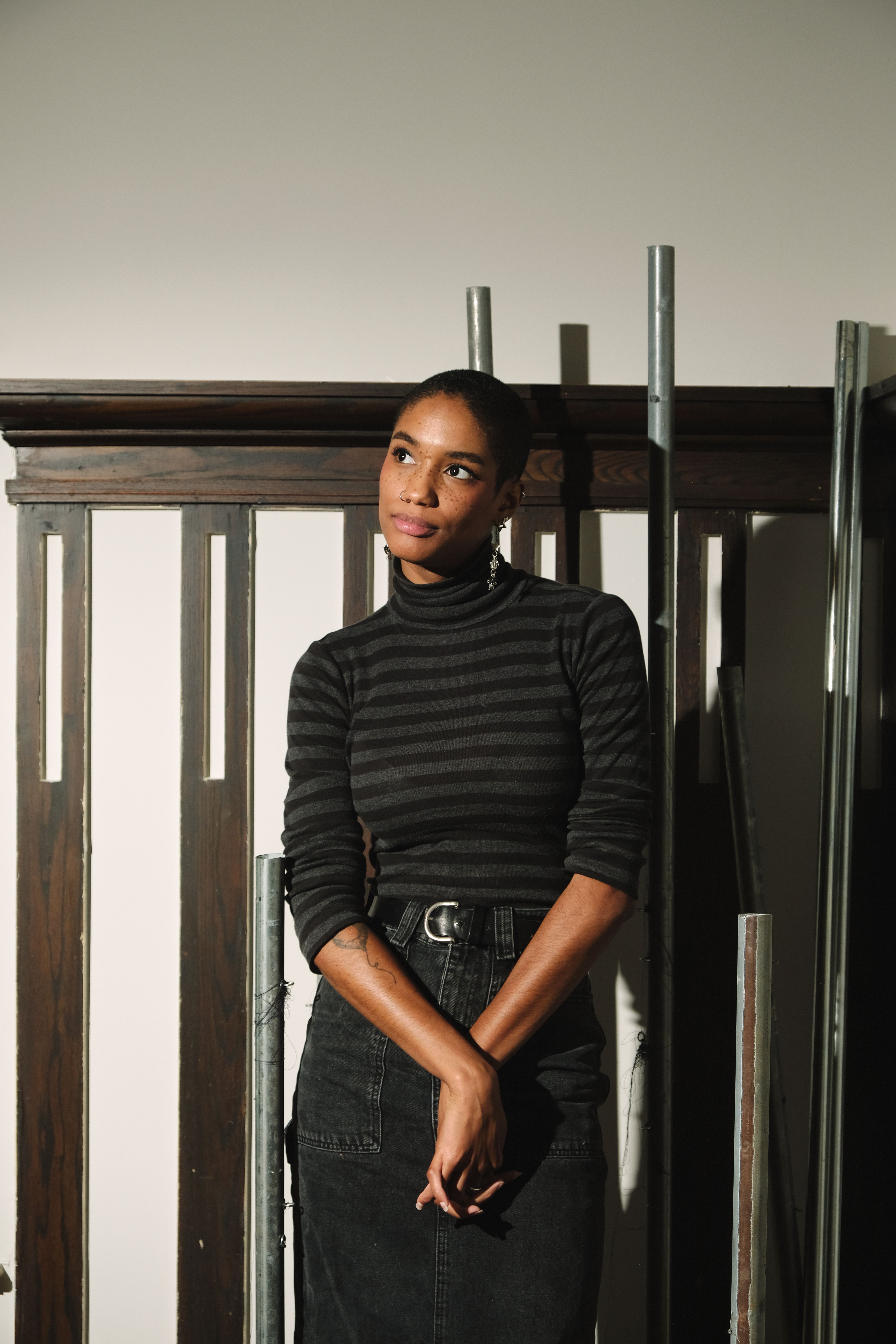
CC: What do you want the viewer to take away from your pieces?
MRG: I want them to take away strength. I think that as my art involves myself, and at times can be physically grueling, my art works as translations of my mental and physical struggles. But I push through them, both in my work and my life, and I think that’s what I want people to take away, that things can be bad, but they come to an end. You push through it.
CC: So your art is principally concerned with the personal aspects of human nature, hardship, and triumph amidst individuals, both yourself and others, but do you strive to make a wider national or international impact as well?
MRG: I do! I’d love to, I think everyone’s story should get as far as it possibly can. I think everyone’s story is important, including my own. I would like to take it that far, and I would like to interact with even more people with different viewpoints, as many as I can to get, not necessarily feedback, but interpretations and ideas. Even though I have my intent, it’s nice to hear what other people take away from what they see, experience, and feel from what I create.
CC: What does national or international impact look like to you?
MRG: I would love to teach. One of the biggest things that changed my life was, back in my hometown of Dayton, Ohio, a program to make a public sculpture at my high school or a local business. Being taught how to weld and woodwork while I helped make this sculpture, and at such a young age changed my life. It also helped make our neighborhood and community beautiful, so one of the big things I want to do is travel and help people, especially young people, make art for their local communities. I’ll get out and go to the next place, but the kids will forever have the skills and artwork, the impact that they had on their local community.
So that’s the big dream for me, making the nation, and perhaps the world, even more beautiful, giving people the tools to make it happen. There are a lot of resources people need to get to in order to build to where I am when it comes to my knowledge, and I’d like to give that to people. Like I said, you need to give people the tools and the means to make art, and you need to give people the stage and the surface to share it, and I would like to facilitate that. I would love to give that to as many people as I can.
CC: Clearly, personal connection is a big part of your art, whether it be with how you connect with yourself, how the viewer connects with your art, and even with just how you connect with the world at large. What personal relationships would you say have most influenced your life?
MRG: I would definitely say my family. I have a wonderful support system behind me. My mother thinks I’m the greatest thing in the world, and I have always been encouraged to make art. I have been applauded no matter how many changes I made or even if they understood my work, they have always encouraged me to create. I feel completely enabled to push myself to make what I do because of them, but also, I have a whole community of support out here. I feel cheered on in all my endeavors by people in the local arts community, I have so much work lifting me up. So though my work deals with harsh themes and things that have happened to me, this level of support helps with the healing process even more than the act of creating art.
CC: And didn’t the Dean of the Herron School of Art and Design, Greg Hall, recently fly you out to an exhibit?
MRG: Yes, we went and saw an exhibit related to David Smith, one of the first artists to create work in welded steel. He knew I had an extensive background in creating work with steel and thought of me when it came time for this exhibit to open, and it meant a lot to me that he thought of me!
CC: With this increase in recognition, where do you see yourself in five years?
MRG: I see myself on bigger stages, making more intense art! I won’t be so held back by resources, so I hope to really grow into what I do while still supporting everywhere I come from. No matter where I end up, I still want to look out for Indy, I still want to look out for my hometown of Dayton, Ohio. I never want to lose sight of that wherever I end up, I always say, “I’m just a girl from Ohio,” and now I’ll always be a girl from Indy.
So in five years, I hope to be teaching, I hope to be traveling, I hope to be making huge things, but I also still want to look out for Storage Space and other smaller galleries in my hometown of Dayton, Ohio, that have been of such benefit and mean so much to me. This place is wonderful, I love Indy a lot. I never expected to find so much love and creativity. People like to think that you have to find creatives elsewhere. That all the good artists are in New York or LA, and that’s just simply not true. I’ll never lose sight of here.
